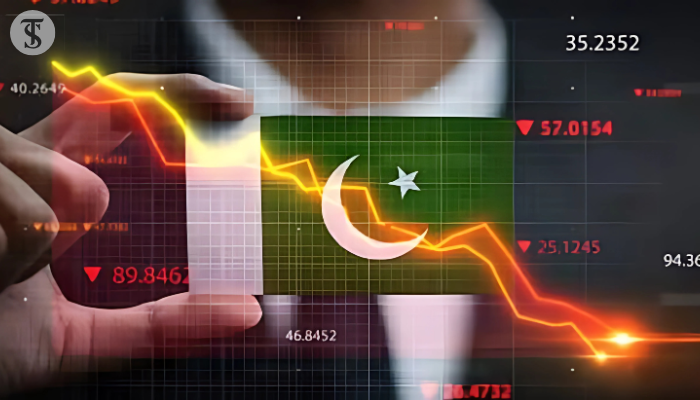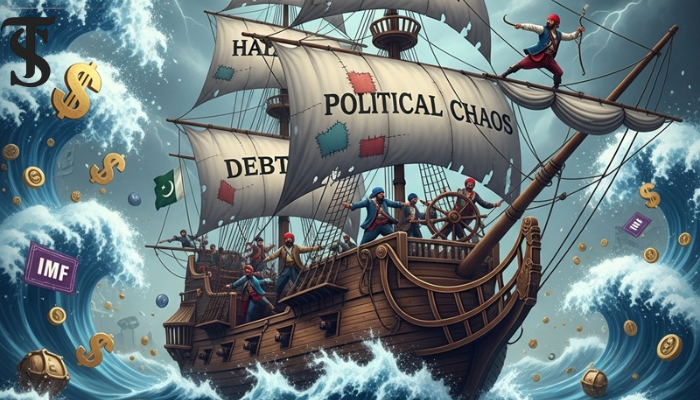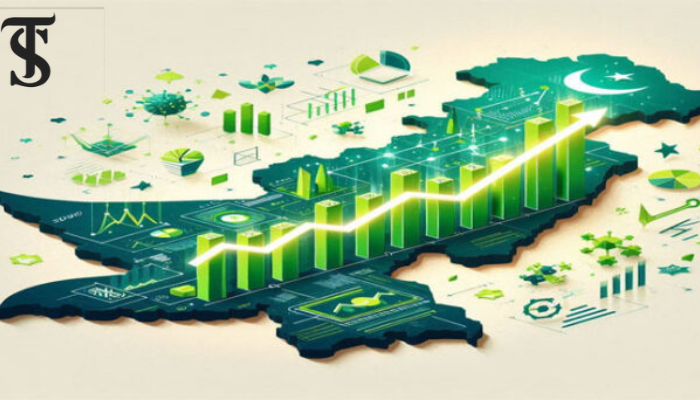Pakistan’s Economic Crossroads: Challenges and the Path to Self-Reliance

Economic self-reliance is a clear path towards socio-economic empowerment. Ultimately, socio-economic sovereignty guarantees a thriving society, and economic progress is the very lifeline for a nation’s survival. Unfortunately, Pakistan’s economy has been crippled by pervasive challenges that have yet to be effectively addressed.
The Economic Survey 2024-25 presents a mixed picture. While some areas show improvement—inflation has been reduced from 26% to 4.7%, per capita income rose by 9.7%, and tax revenue surged by 26.3%—the growth-to-GDP target of 3.6% was missed, achieving only 2.68%. Furthermore, the Survey highlighted that macroeconomic reforms and poverty alleviation mechanisms haven’t been properly formulated and implemented. Challenges like a lack of proper mechanisms to extend the tax base, a colossal energy crisis, over-reliance on imports, high unemployment, and critically low foreign exchange reserves have continuously hindered economic prosperity.
In fact, according to data from the Federal Board of Revenue, the tax collection target for the financial year 2022 was Rs. 7,470 billion, but only Rs. 7,200 billion was collected. This resulted in a significant loss of Rs. 270 billion that burdened the exchequer. Compounding this, the National Crime Agency has revealed startling facts: pervasive tax evasion in Pakistan has exacerbated the miseries of the downtrodden strata of society. Taxing the poor while exempting the rich has created a harsh fiscal deficit, which, in turn, increases borrowings and elevates inflation. Moreover, it disrupts the exchange rate, hindering foreign direct investment. Additionally, over-spending on imports has led to an export deficit.
Beyond fiscal challenges, in the book “Issues in Pakistan’s Economy,” the author rightly points out that the agro-based economy has been shunned by stakeholders. Despite more than sixty percent of the total population being linked with the agricultural sector, it contributes only twenty-two percent to the GDP, painting a grim picture of agricultural productivity. Paradoxically, despite huge potential for exporting rice, vegetables, wheat, sports goods, and surgical instruments, Pakistan has been importing them. Furthermore, this export deficit has mitigated economic growth, further aggravating economic woes.
Significantly, high unemployment creates social unrest in a country. Pakistan’s unemployment rate stands at 7.2% in 2025. A staggering sixty percent of Pakistan’s population comprises youth who are either unemployed or out of educational training. Moreover, only twenty-one percent of the women workforce contribute to the GDP, which is significantly less than the IMF report’s suggestion that it could contribute more than 40% to national GDP. Adding to this, the menace of corruption and nepotism breeds joblessness, further fueling social unrest. Brain drain is a direct repercussion of high unemployment, hindering productivity and stifling creativity. World Bank reports, tragically, show that the increasing crime rate in Pakistan is due to sixty percent of the people falling below the poverty line.
To make matters worse, critically low foreign exchange reserves have intensified the debt burden on Pakistan’s treasury. With only Rs. 7 billion in foreign exchange reserves accounted for in the financial year 2023, the nation couldn’t cover its debts. Consequently, Pakistan had to approach the IMF for a bailout package that entailed suspending subsidies, dictating fiscal policy, increasing tariffs on food items, and increasing surcharges on gas and electricity bills. While this temporarily eases economic woes and the balance-of-payments, it undeniably implies external meddling.
Adding to these internal economic pressures, the lingering political instability and prevalent poor governance have severely obstructed the tackling of the economic crisis. The book “Why Nations Fail” clearly states that political stability is intricately tied to economic stability. This book further elucidates that extractive economic institutions make nations like North Korea, Chad, Mali, and Burkina Faso socio-economically fragile. According to veteran economist Kaiser Bengali, political instability has eroded the confidence of both local and international investors to invest in different sectors of Pakistan. Moreover, political instability impedes a business-friendly environment, further hampering the growth of small and medium enterprises. Furthermore, former Governor of the State Bank of Pakistan, Dr. Ishrat Hussain, has contended that a lack of accountability, transparency, and the rule of law in institutions has weakened public service delivery, which has elevated economic woes. Besides this, the lack of macroeconomic structural reforms has also worsened economic growth.
Finally, the menace of terrorism and extremism has also significantly stagnated Foreign Direct Investment (FDI). Renowned columnist Zahid Hussain has claimed that Pakistan’s trade has been shaken by cross-border terrorism on both its western and eastern borders. Moreover, the rise of extremism from within has caused capital flight.
Looking ahead, practical recommendations can make Pakistan socio-economically empowered. For instance, in the provinces of Balochistan, Khyber Pakhtunkhwa (KPK), and Gilgit-Baltistan, there are huge reservoirs of critical minerals, approximately valued at $8 trillion. Specifically, in Chaghi and Khuzdar, untapped metals like Lithium, copper, Gold, and Rare Earth Elements (REEs) can prove to be game-changers because they are used in semiconductors, electric vehicle batteries, aerospace technology, and renewable energy sources. Similarly, the enormous reserves of Limestone, gypsum, gemstones, coal, and Uranium in the mountains of KPK are important as they are used in the chemical industry and nuclear energy. Strategically important metal reservoirs like Nickel, cobalt, Lead, Lithium, and REEs in the mountains of GB can also boost Pakistan’s economy.
To capitalize on this potential, the Pakistan Mineral Investment Forum 2025 has been established to transform the unlocked potential of critical minerals into a multi-trillion-dollar economy. Prime Minister Shehbaz Sharif has urged not to export raw materials but to first convert them into finished products before export, claiming that this can overcome Pakistan’s reliance on external dependence, especially on the IMF. Furthermore, Deputy Prime Minister Ishaq Dar unveiled the National Minerals Harmonization Framework 2025 to adopt lenient policies and attract FDI, firmly contending that minerals’ contribution to GDP can be increased from 3.2% to 10-15%. While some obstacles exist—such as a lack of modern machinery, robust infrastructure, and adequate investment for mineral exploration—the Pakistan Minerals Bill 2025 and the firm commitment of all stakeholders can overcome these challenges in the very near future.
In a similar vein, Pakistan should unlock the potential of the Blue Economy. Exporting fisheries, for example, can lucratively enhance Pakistan’s exports. Seaports like Gwadar seaport can extend connectivity and elevate international trade. Moreover, sea beaches, water sports, and ecotourism can significantly boost the economy. Seabed exploration for minerals could be used in the chemical industry, and the pharmaceutical industry can source raw materials from water sources. In this way, its contribution to GDP can be increased from 3% to 15%.
In a nutshell, it can be stated that the pervasive grim challenges to Pakistan’s economy—such as the deficit in growth-to-GDP, lowest foreign reserves, high unemployment, and export deficit—can be managed by ensuring political stability, good governance, eradicating radicalization, and above all, investing in human development. To achieve this, Pakistan should enhance its education sector budget from 3% to at least 10%. Crucially, the STEM education system must be affordable across the board. The technological sector must be highly prioritized, and special tax exemptions should be given to enhance technological exports. The digital gap must be bridged to enhance female workforce participation in remote areas alongside urban ones. Ultimately, a knowledge-based economy can be boosted by mainstreaming e-commerce.

Mian Muaiz Gul
The author is a freelance writer.





